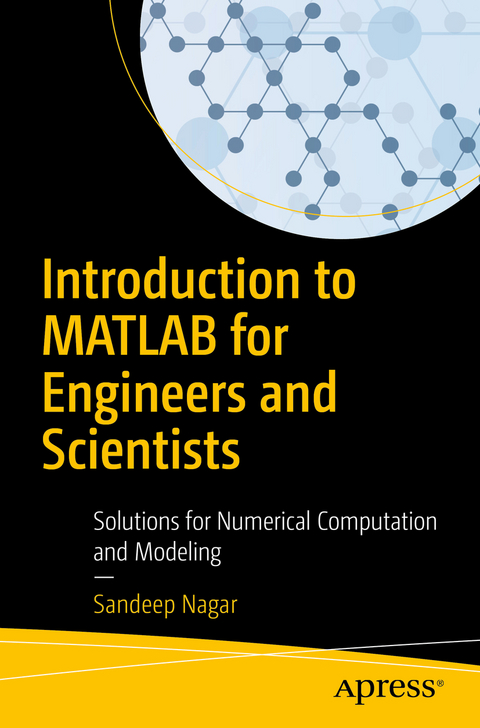
Introduction to MATLAB for Engineers and Scientists
Solutions for Numerical Computation and Modeling
Seiten
2017
|
1st ed.
Apress (Verlag)
978-1-4842-3188-3 (ISBN)
Apress (Verlag)
978-1-4842-3188-3 (ISBN)
Familiarize yourself with MATLAB using this concise, practical tutorial that is focused on writing code to learn concepts. Starting from the basics, this book covers array-based computing, plotting and working with files, numerical computation formalism, and the primary concepts of approximations. Introduction to MATLAB is useful for industry engineers, researchers, and students who are looking for open-source solutions for numerical computation.
In this book you will learn by doing, avoiding technical jargon, which makes the concepts easy to learn. First you’ll see how to run basic calculations, absorbing technical complexities incrementally as you progress toward advanced topics. Throughout, the language is kept simple to ensure that readers at all levels can grasp the concepts.
What You'll Learn
Apply sample code to your engineering or science problems
Work with MATLAB arrays, functions, and loops
Use MATLAB’s plotting functions for data visualization
Solve numerical computing and computational engineering problems with a MATLAB case study
Who This Book Is For
Engineers, scientists, researchers, and students who are new to MATLAB. Some prior programming experience would be helpful but not required.
In this book you will learn by doing, avoiding technical jargon, which makes the concepts easy to learn. First you’ll see how to run basic calculations, absorbing technical complexities incrementally as you progress toward advanced topics. Throughout, the language is kept simple to ensure that readers at all levels can grasp the concepts.
What You'll Learn
Apply sample code to your engineering or science problems
Work with MATLAB arrays, functions, and loops
Use MATLAB’s plotting functions for data visualization
Solve numerical computing and computational engineering problems with a MATLAB case study
Who This Book Is For
Engineers, scientists, researchers, and students who are new to MATLAB. Some prior programming experience would be helpful but not required.
Sandeep Nagar, Ph.D. teaches and consults on the use of Python and other open source programming languages for for data science/analysis and numerical computing for engineering and science applications. In addition to teaching at universities, he frequently gives workshops covering open source software. Sandeep has a Ph.D. in Material Science from KTH, Sweden in May 2012. Prior to that degree, he obtained a M.Sc. in Physics with specialization in Electronics and Radio Physics and a B.Sc.B.Ed degrees in India.
1. Introduction.- 2. Working with Arrays.- 3. Plotting.- 4. Data Accessibility and Persistence.- 5. Functions and loops.- 6. Numerical Computing.- 7. A Numerical Computation Case Study.
| Erscheinungsdatum | 23.12.2017 |
|---|---|
| Zusatzinfo | 25 Illustrations, color; 1 Illustrations, black and white; XV, 213 p. 26 illus., 25 illus. in color. |
| Verlagsort | Berkley |
| Sprache | englisch |
| Maße | 155 x 235 mm |
| Themenwelt | Mathematik / Informatik ► Informatik ► Programmiersprachen / -werkzeuge |
| Mathematik / Informatik ► Informatik ► Theorie / Studium | |
| Mathematik / Informatik ► Mathematik ► Angewandte Mathematik | |
| Mathematik / Informatik ► Mathematik ► Computerprogramme / Computeralgebra | |
| ISBN-10 | 1-4842-3188-0 / 1484231880 |
| ISBN-13 | 978-1-4842-3188-3 / 9781484231883 |
| Zustand | Neuware |
| Informationen gemäß Produktsicherheitsverordnung (GPSR) | |
| Haben Sie eine Frage zum Produkt? |
Mehr entdecken
aus dem Bereich
aus dem Bereich
Schulbuch Klassen 7/8 (G9)
Buch | Hardcover (2015)
Klett (Verlag)
CHF 29,90


